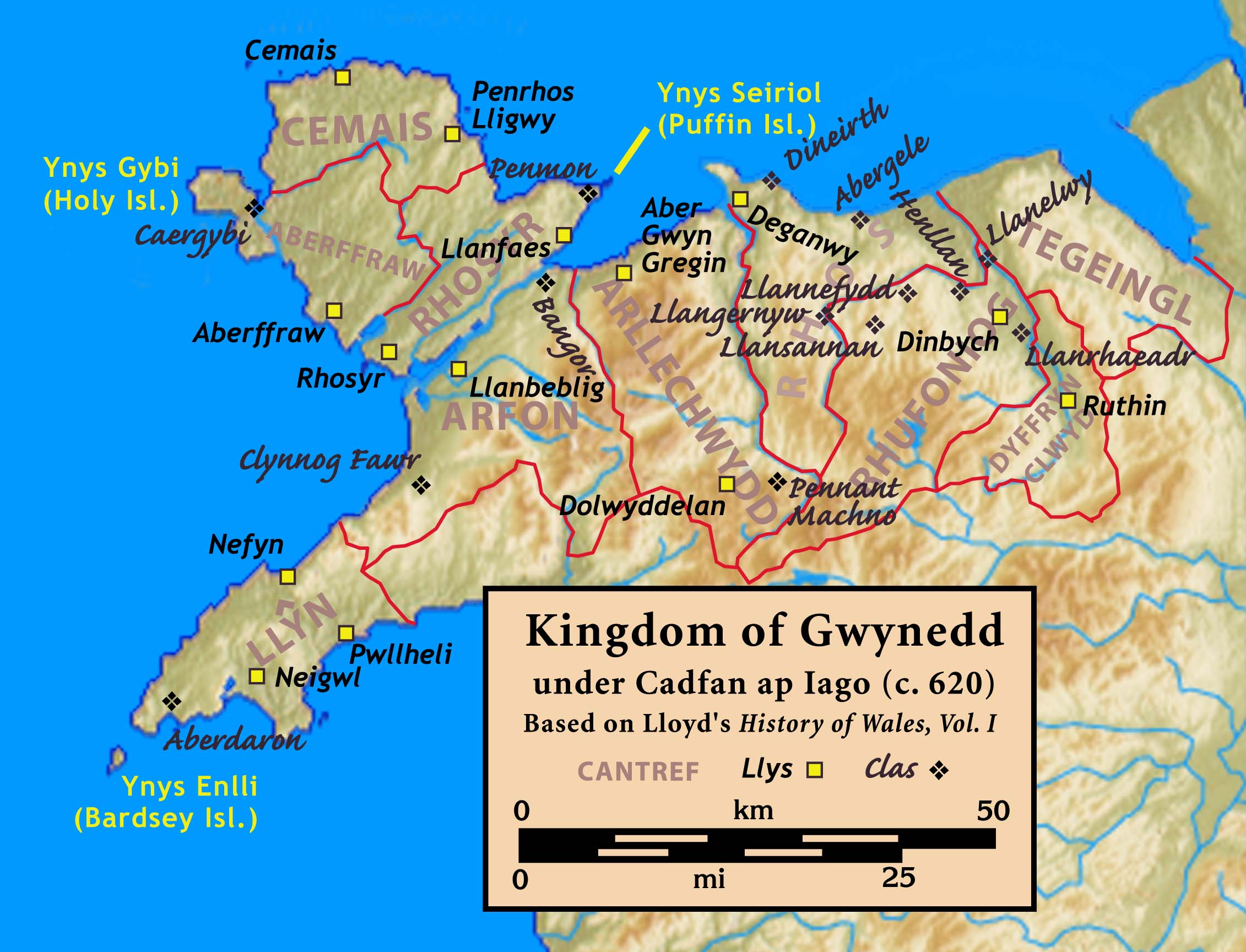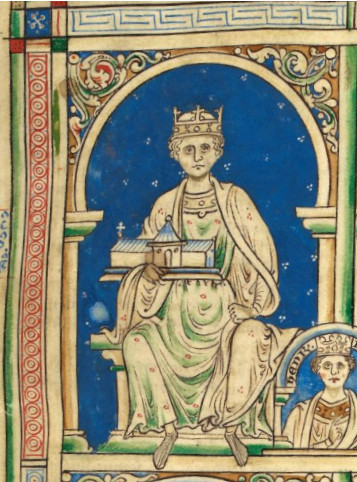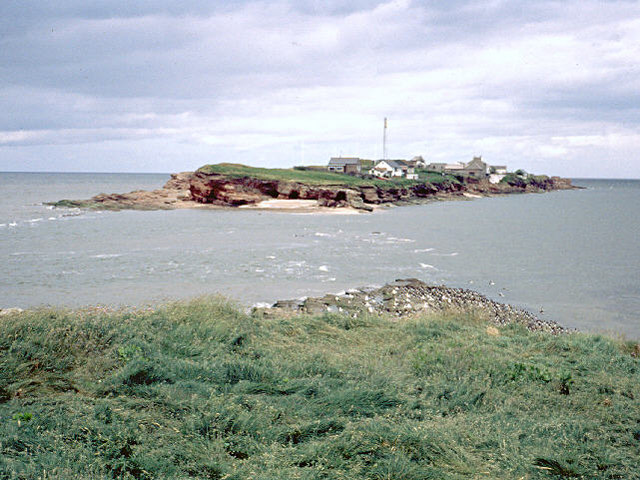|
Basingwerk
Basingwerk Abbey () is a Grade I listed buildings in Flintshire, Grade I listed ruined abbey near Holywell, Flintshire, Holywell, Flintshire, Wales. The abbey, which was founded in the 12th century, belonged to the Cistercian, Order of Cistercians. It maintained significant lands in the English county of Derbyshire. The abbey was abandoned and its assets sold following the Dissolution of the Monasteries in 1536. The site is now managed by Cadw – the national Welsh heritage agency. Medieval history The abbey was founded in 1132 by Ranulf de Gernon, 4th Earl of Chester, who had already brought Benedictine monks from Savigny Abbey in southern Normandy. Likely the first location of the abbey was not at the current location at Greenfields but at the nearby Hen Blas. The abbey became part of the Cistercian Order in 1147, when the Congregation of Savigny, Savignac Order merged with the Cistercians. It was a daughter house of Combermere Abbey in Cheshire, of which Earl Ranulf was a ... [...More Info...] [...Related Items...] OR: [Wikipedia] [Google] [Baidu] |
Buildwas Abbey
Buildwas Abbey was a Cistercian (originally Congregation of Savigny, Savigniac) monastery located on the banks of the River Severn, at Buildwas in Shropshire, England - today about west of Ironbridge. Founded by the local bishop in 1135, it was sparsely endowed at the outset but enjoyed several periods of growth and increasing wealth: notably under Abbot Ranulf in the second half of the 12th century and again from the mid-13th century, when large numbers of acquisitions were made from the local landed gentry. Abbots were regularly used as agents by the House of Plantagenet, Plantagenet monarchs in their attempts to Norman invasion of Ireland, subdue Ireland and Conquest of Wales by Edward I, Wales and the abbey acquired a Dependency (religion), daughter house in each country. It was a centre of learning, with a substantial library, and was noted for its discipline until the economic and demographic crises of the 14th century brought about decline and difficulties, exacerbated by ... [...More Info...] [...Related Items...] OR: [Wikipedia] [Google] [Baidu] |
Grade I Listed Buildings In Flintshire
In the United Kingdom, the term listed building refers to a building or other structure officially designated as being of special architectural, historical, or cultural significance; Grade I structures are those considered to be "buildings of exceptional interest". Listing was begun by a provision in the Town and Country Planning Act 1947. Once listed, strict limitations are imposed on the modifications allowed to a building's structure or fittings. In Wales, the authority for listing under the Planning (Listed Buildings and Conservation Areas) Act 1990 rests with Cadw. Buildings See also * Grade II* listed buildings in Flintshire * Listed buildings in Wales Notes References External links {{Use dmy dates, date=April 2017 Grade I listed buildings in Flintshire, Lists of listed buildings in Flintshire, I Lists of Grade I listed buildings in Wales ... [...More Info...] [...Related Items...] OR: [Wikipedia] [Google] [Baidu] |
Kingdom Of Gwynedd
The Kingdom of Gwynedd (Medieval Latin: ; Middle Welsh: ) was a Wales in the Early Middle Ages, Welsh kingdom and a Roman Empire Succession of states, successor state that emerged in sub-Roman Britain in the 5th century during the Anglo-Saxon settlement of Britain. Based in northwest Wales, the list of rulers of Gwynedd, rulers of Gwynedd repeatedly rose to dominance and were acclaimed as "King of the Britons" before losing their power in civil wars or invasions. The kingdom of Gruffydd ap Llywelynthe King of Wales from 1055 to 1063was shattered by a Timeline of conflict in Anglo-Saxon Britain, Saxon invasion in 1063 just prior to the Norman invasion of Wales, but the House of Aberffraw restored by Gruffudd ap Cynan slowly recovered and Llywelyn the Great of Gwynedd was able to proclaim the Principality of Wales at the Aberdyfi gathering of Welsh princes in 1216. In 1277, the Treaty of Aberconwy between Edward I of England and Llywelyn's grandson Llywelyn ap Gruffudd granted pe ... [...More Info...] [...Related Items...] OR: [Wikipedia] [Google] [Baidu] |
Congregation Of Savigny
The monastic Congregation of Savigny (Savigniac Order) started in the abbey of Savigny, situated in northern France, on the confines of Normandy and Brittany, in the Diocese of Coutances. It originated in 1105 when Vitalis of Mortain established a hermitage in the forest at Savigny in France. Founding Vitalis was a canon of the Collegiate Church of St. Evroul in Mortain. He resigned his prebend to embrace an eremitical life under Robert of Arbrissel in the forest of Craon, located in Anjou. Leaving the latter, he retired to the forest of Savigny, where he built his own hermitage.Webster, Douglas Raymund. "St. Vitalis of Savigny." The Catholic Encyclopedia Vol. 15. New York: Robert Appleton Company, 1912] The number of disciples who then gathered around him necessitat ... [...More Info...] [...Related Items...] OR: [Wikipedia] [Google] [Baidu] |
Battle Of Ewloe
The Battle of Ewloe (also known as the Battle of Coleshill, Flintshire, Coleshill, or Counsylth, or Coleshille, or Cennadlog) was fought in July 1157 between the Anglo-Norman forces of King Henry II of England and an army led by the Welsh people, Welsh Tywysog Owain Gwynedd, near Ewloe in what is now Flintshire, north-east Wales, although the precise location of the battle is still a matter of scholarly debate. The battle was part of Henry's campaign to reassert control over Welsh territories and the Welsh Marches following his accession to the throne in 1154. In an attempt to outflank Owain's defensive position, Henry led a detachment through the woods of Hawarden, where he was ambushed by an awaiting Welsh force, commanded by Owain's sons Dafydd ab Owain Gwynedd, Dafydd and Cynan ab Owain Gwynedd, Cynan. The English suffered significant losses, including the death of the prominent noble Eustace fitz John. Both English and Welsh contemporary sources report a severe setback for ... [...More Info...] [...Related Items...] OR: [Wikipedia] [Google] [Baidu] |
Holywell, Flintshire
Holywell ( ; ) is a market town and community in Flintshire, Wales. It lies to the west of the estuary of the River Dee. The community includes Greenfield. In 2011, it had a population of 8,886. Etymology The name Holywell is literally ' + ' in reference to St Winefride's Well, which is situated in the town. Similarly, its Welsh name, ', is a compound of ' "town" + ' "well", meaning "town of hewell". History The market town of Holywell is known for St Winefride's Well, a holy well surrounded by a chapel. It has been a site of Christian pilgrimage since about 660, dedicated to Saint Winefride who, according to legend, was beheaded there by Caradog who attempted to attack her. The well is one of the Seven Wonders of Wales and the town bills itself as ''The Lourdes of Wales''. Many pilgrims from all over the world continue to visit Holywell and the well. From the 18th century, the town grew around the lead mining and cotton milling industries. The water supply from the ... [...More Info...] [...Related Items...] OR: [Wikipedia] [Google] [Baidu] |
Normandy
Normandy (; or ) is a geographical and cultural region in northwestern Europe, roughly coextensive with the historical Duchy of Normandy. Normandy comprises Normandy (administrative region), mainland Normandy (a part of France) and insular Normandy (mostly the British Channel Islands). It covers . Its population in 2017 was 3,499,280. The inhabitants of Normandy are known as Normans; the region is the historic homeland of the Norman language. Large settlements include Rouen, Caen, Le Havre and Cherbourg-en-Cotentin, Cherbourg. The cultural region of Normandy is roughly similar to the historical Duchy of Normandy, which includes small areas now part of the departments of Mayenne and Sarthe. The Channel Islands (French: ''Îles Anglo-Normandes'') are also historically part of Normandy; they cover and comprise two bailiwicks: Bailiwick of Guernsey, Guernsey and Jersey, which are British Crown Dependencies. Normandy's name comes from the settlement of the territory by Vikings ( ... [...More Info...] [...Related Items...] OR: [Wikipedia] [Google] [Baidu] |
Twthill, Rhuddlan
Twthill () is a Norman castle located near the town of Rhuddlan, Denbighshire in Wales; historic names for the site include Toothill and Tot Hill Castle and it is also known as Old Rhuddlan Castle. It is a motte-and-bailey castle and was later replaced by the much larger, stone-built Rhuddlan Castle. The only remaining visible signs of the old castle are the large mound of the motte, and traces of the wall that surrounded the bailey. History Twthill castle was built to a 'motte and bailey' design and was erected by Robert of Rhuddlan in 1073. He was a kinsman of Hugh d'Avranches, Earl of Chester and the castle was designed to consolidate Norman advances into the north of Wales at the command of William the Conqueror. Using this castle as a base, Robert subdued the Welsh and established control of much of North Wales. A borough became established beside the castle and by 1086, eighteen burgesses enjoying special privileges lived here, and the buildings included a church and a ... [...More Info...] [...Related Items...] OR: [Wikipedia] [Google] [Baidu] |
Henry II Of England
Henry II () was King of England The monarchy of the United Kingdom, commonly referred to as the British monarchy, is the form of government used by the United Kingdom by which a hereditary monarch reigns as the head of state, with their powers Constitutional monarchy, regula ... from 1154 until his death in 1189. During his reign he controlled Kingdom of England, England, substantial parts of Wales in the High Middle Ages, Wales and Lordship of Ireland, Ireland, and much of Kingdom of France, France (including Duchy of Normandy, Normandy, County of Anjou, Anjou, and Duchy of Aquitaine, Aquitaine), an area that altogether was later called the Angevin Empire, and also held power over Kingdom of Scotland, Scotland and the Duchy of Brittany. Henry was the eldest son of Geoffrey Plantagenet, Count of Anjou, and Empress Matilda, Matilda, daughter of Henry I of England. By the age of fourteen, he became politically and militarily involved in The Anarchy, his mother's efforts ... [...More Info...] [...Related Items...] OR: [Wikipedia] [Google] [Baidu] |
Owain Gwynedd
Owain ap Gruffudd ( – 23 or 28 November 1170) was King of Gwynedd, North Wales, from 1137 until his death in 1170, succeeding his father Gruffudd ap Cynan. He was called Owain the Great () and the first to be styled "Prince of Wales" and the " Prince of the Welsh". He is considered to be the most successful of all the North Welsh princes prior to his grandson, Llywelyn ab Iorwerth (Llywelyn the Great). He became known as Owain Gwynedd (, "Owain of Gwynedd") to distinguish him from the contemporary king of Powys Wenwynwyn, Owain ap Gruffydd ap Maredudd, who became known as Owain Cyfeiliog. Early life Owain Gwynedd was a member of the House of Aberffraw, the senior branch of the dynasty of Rhodri Mawr (Rhodri the Great). His father, Gruffudd ap Cynan, was a strong and long-lived ruler who had made the principality of Gwynedd the most influential in Wales during the sixty-two years of his reign, using the island of Anglesey as his power base. His mother, Angharad ferch Ow ... [...More Info...] [...Related Items...] OR: [Wikipedia] [Google] [Baidu] |
West Kirby
West Kirby () is a coastal town in the Metropolitan Borough of Wirral, Merseyside, England. In the north west of the Wirral Peninsula and at the mouth of the River Dee, the town is contiguous with Hoylake. It lies within the historic county boundaries of Cheshire, and became part of Merseyside in 1974. The built up area had a population of 13,380 at the 2021 census. History The name West Kirby is of Viking origin, originally ''Kirkjubyr'', meaning 'village with a church'. The form with the modifier "West" exists to distinguish it from the other town of the same name in Wirral: Kirkby-in-Walea (now the modern town of Wallasey). The earliest usage given of this form is ''West Kyrkeby in Wirhale'' in 1285. The old village lay around St. Bridget's Church, but the town today is centred on West Kirby railway station, which is about 1 km away. The town has a Victorian promenade, flanked by the West Kirby Marine Lake that permits boats to sail even at low tide. The origina ... [...More Info...] [...Related Items...] OR: [Wikipedia] [Google] [Baidu] |




